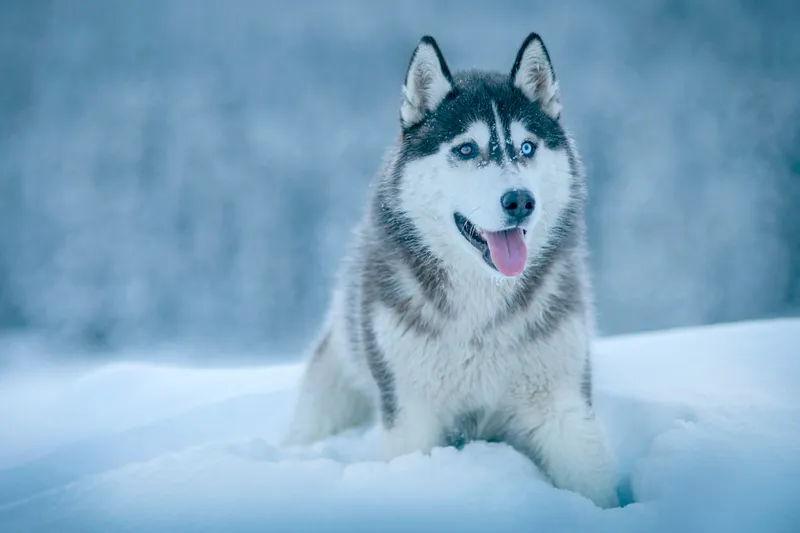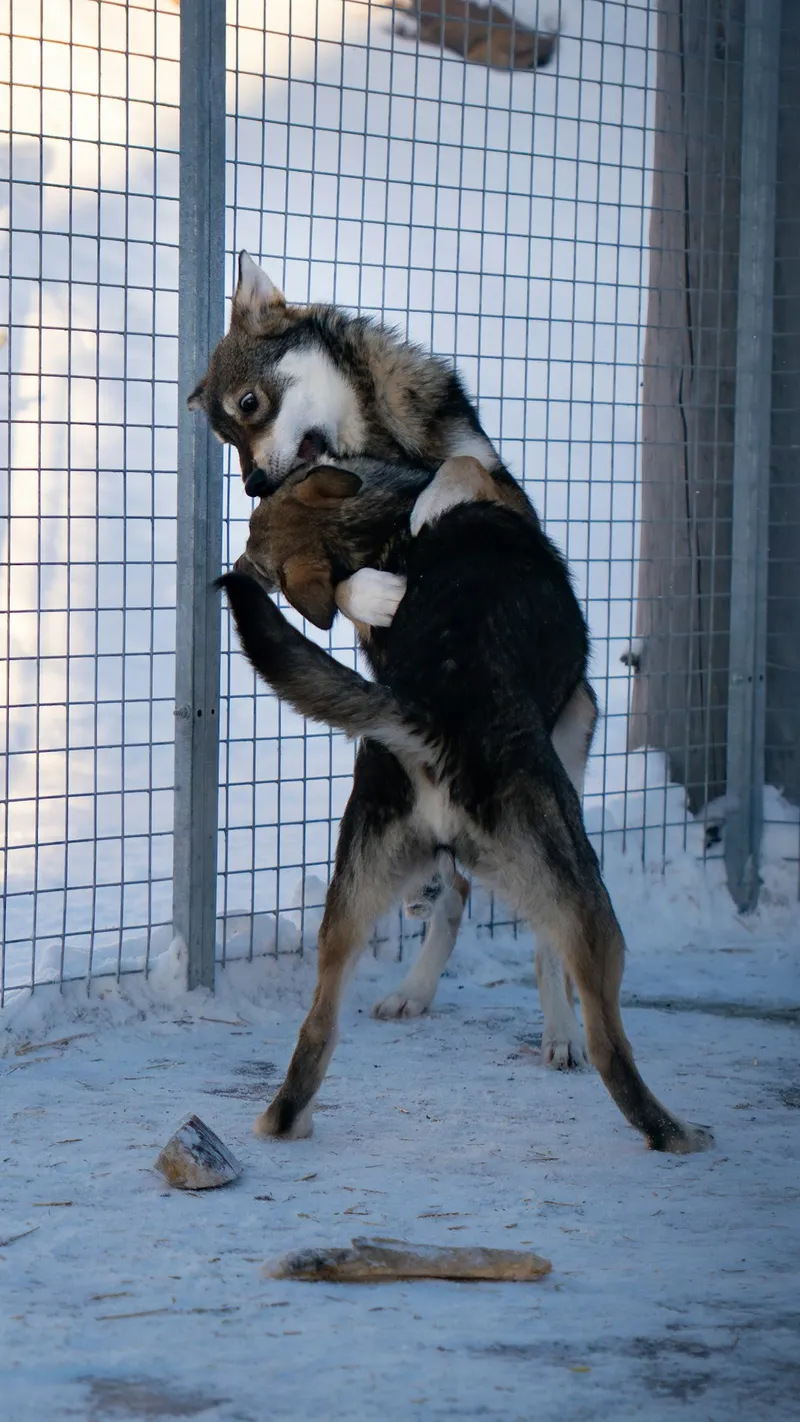The Siberian Husky is one of the most recognized Nordic dog breeds for its beauty, tireless energy, and independent character. Originally from the cold regions of Siberia, this sled dog combines history, endurance, and an endearing personality that makes it unmistakable.

Breed Traits & Characteristics
Origin and History of the Siberian Husky
The Siberian Husky comes from the Chukchi tribe of northeastern Siberia, who bred it as a working dog to pull sleds over long distances. This breed had to endure extremely cold temperatures and travel dozens of kilometers without losing speed or energy.
The Husky’s fame grew when dogs of this breed, led by Togo and Balto, participated in the legendary serum run to Nome in 1925, saving hundreds of lives by transporting medicine in the middle of a winter storm.
Over time, the Husky evolved from being a working dog to a family and sporting companion, participating in mushing competitions and occupying an important place in popular culture.
Physical Characteristics
Size and Weight
Siberian Huskies are medium to large-sized dogs. Males typically weigh between 20 and 27 kg, while females weigh between 16 and 23 kg. Their body is compact, muscular, and agile.
Coat and Colors
They possess an impressive thick double coat, designed to withstand extreme cold. They shed heavily twice a year. Colors range from pure white to combinations of black, gray, red, or sable with white.
Eyes (including heterochromia)
One of their most striking features are their almond-shaped eyes, which can be blue, brown, or have heterochromia (one eye of each color). This trait is due to a genetic variation common in the breed.
Temperament and Personality
The Siberian Husky is friendly, lively, and very independent. It has a strong pack instinct and occasionally shows stubbornness. It’s sociable with people and dogs but isn’t a good guard dog, as it tends to greet strangers.
Its primitive behavior manifests in its tendency to howl rather than bark and its impulse to migrate or escape if not properly exercised. It’s ideal for active families and adapts well to living with other dogs.
Care and Lifestyle
Intense Exercise Needs
This breed needs at least 1-2 hours daily of rigorous physical exercise. Long walks, runs, hiking, and canine sports are essential for their well-being.

Space Requirements
Living in a rural environment or with a large, fenced space is optimal. Not recommended for apartments or small homes without access to open areas.
Not Recommended for Sedentary People
If you lead a quiet life or spend a lot of time away from home, the Husky is not the best option. Boredom can lead to destructive behaviors.
Siberian Husky Nutrition
The Husky’s metabolism is efficient, so it requires less food than its size suggests, but of high quality. Its diet should be rich in proteins and healthy fats.
- Zinc: Some Huskies have zinc deficiency, which can cause skin problems. It’s important to consult with a veterinarian about the need for supplementation.
- BARF diet vs. kibble: The BARF diet (biologically appropriate raw foods) is an ideal option if handled correctly. Premium kibble is also valid, as long as it contains a quality protein base.
Consulting with a canine nutritionist is best to adapt nutrition to their physical activity level.
Health and Common Diseases
Although generally healthy, the Siberian Husky can suffer from certain genetic diseases:
- Hip dysplasia
- Juvenile cataracts and hereditary eye problems
- Epilepsy
- Zinc-responsive dermatosis
Prevention:
- Regular eye examinations
- Hip X-rays
- Complete preventive veterinary plan
Hygiene and Coat Maintenance
The Husky is exceptionally clean: it doesn’t smell strong and rarely needs frequent baths.
Brushing:
- During seasonal shedding (spring and fall), needs daily brushing
- The rest of the year, 1-2 times per week is sufficient
Living in warm climates can increase shedding, so good ventilation and constant shade are recommended.
Training and Socialization
Training a Husky can be a real challenge. They are intelligent but also stubborn and independent.
Tips:
- Positive reinforcement, never physical punishment
- Early socialization from puppyhood
- Short, fun, and frequent sessions
- Avoid monotonous routines

The key is consistency and patience.
Sports and Activities They Enjoy
The Husky was created to move and greatly enjoys the following sports:
- Mushing (sledding)
- Skijoring (snow pulling with skis)
- Bikejoring (pulling a bicycle)
- Canicross (running alongside the owner)
These activities are perfect for channeling their mental and physical energy, while also improving the bond with their human.
Siberian Husky Curiosities
- Howls more than barks. Its howl can be heard up to 16 km away.
- When sleeping, it curls its tail over its snout to conserve heat, an ancestral survival technique.
- It’s the protagonist of the animated movie “Balto,” based on real events.
- Has great digging ability and can become an “escape artist.”
Is it a good dog for you?
Before adopting a Siberian Husky, ask yourself these questions:
- Do I have enough outdoor and fenced space?
- Can I dedicate at least 2 hours a day to exercise?
- Do I have experience with independent dogs?
- Am I willing to invest in frequent brushing?
If you answered “yes” to these questions, the Husky can be an incredible companion for you.